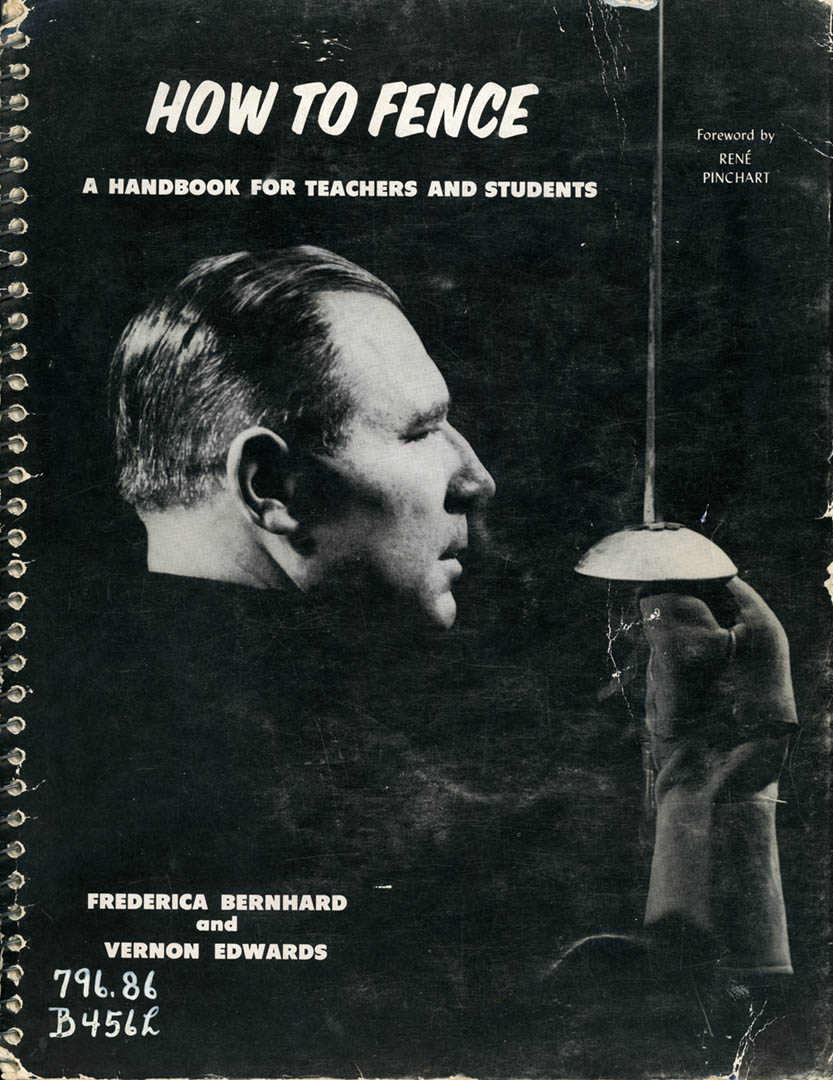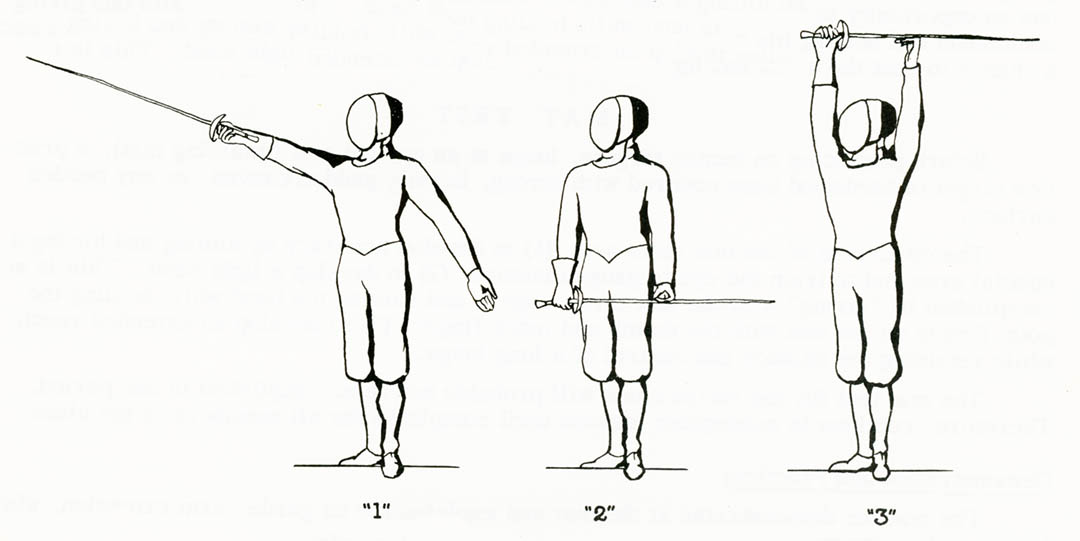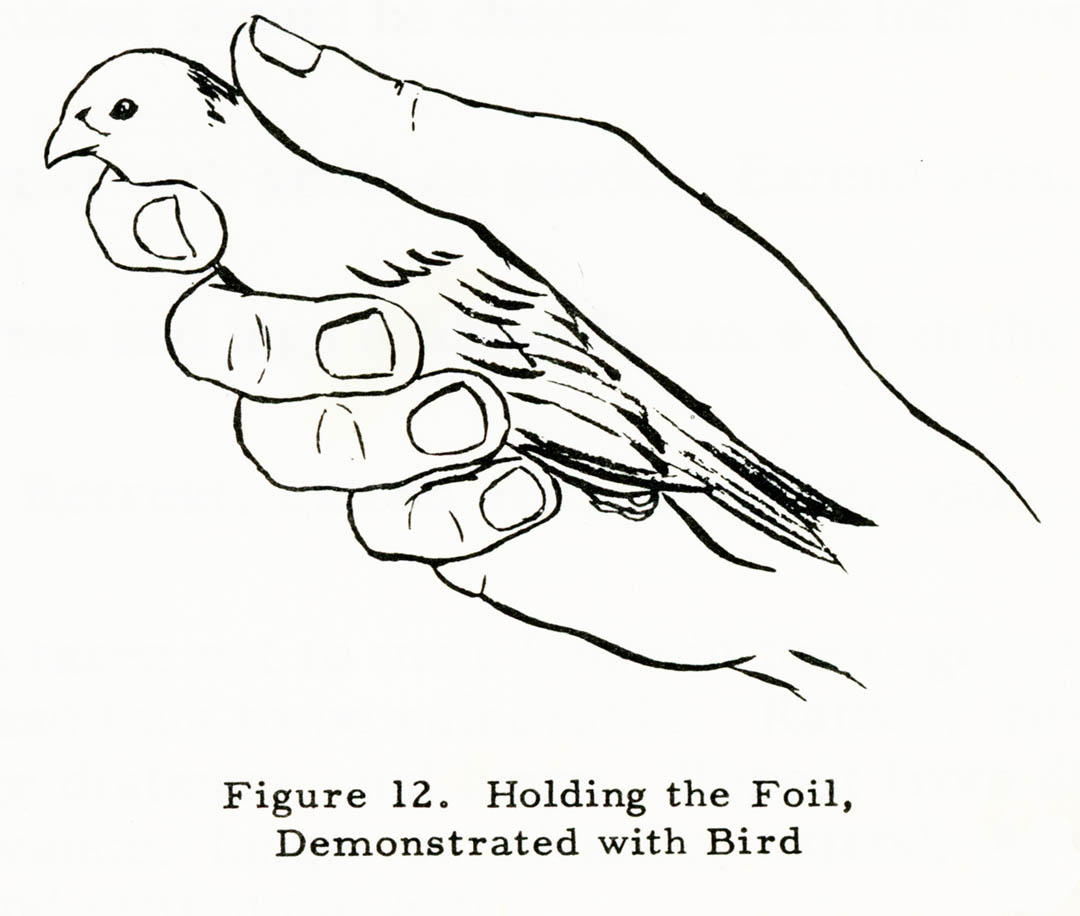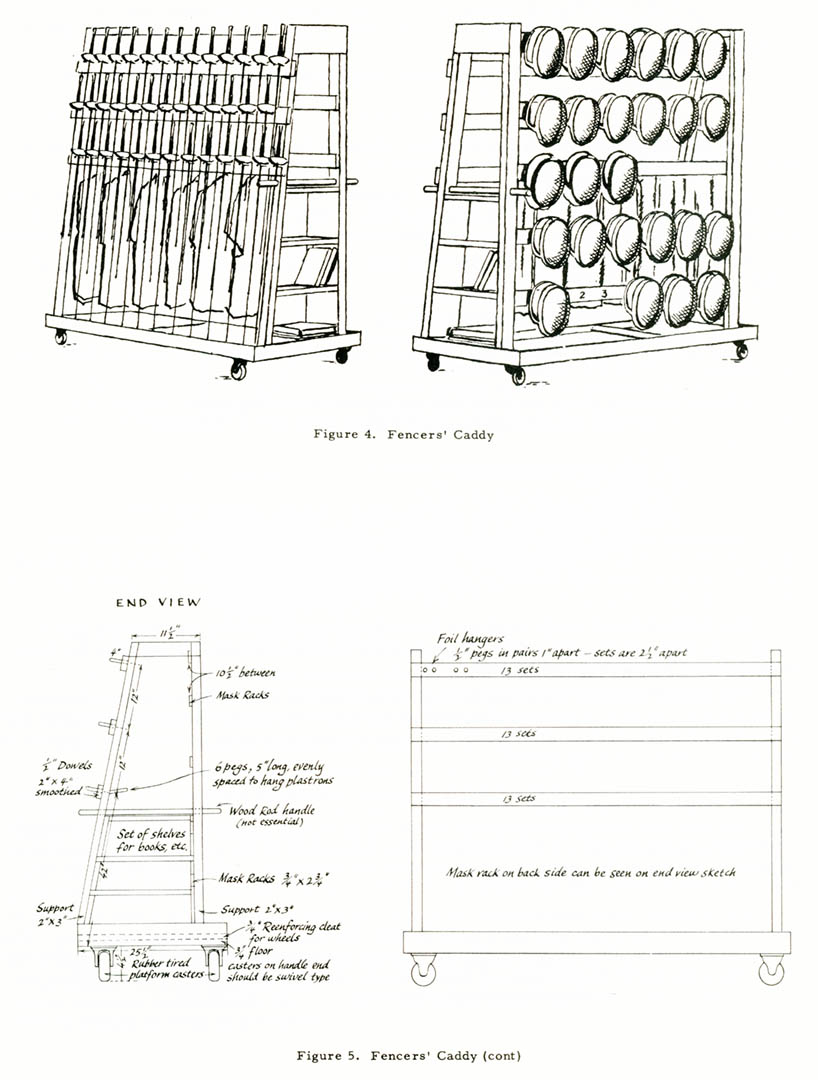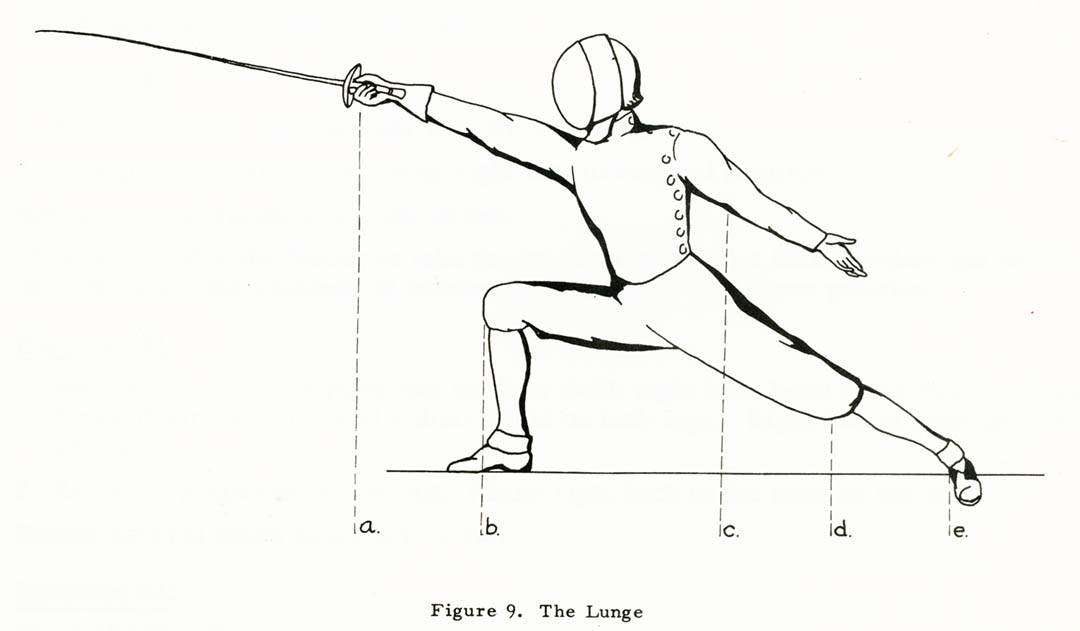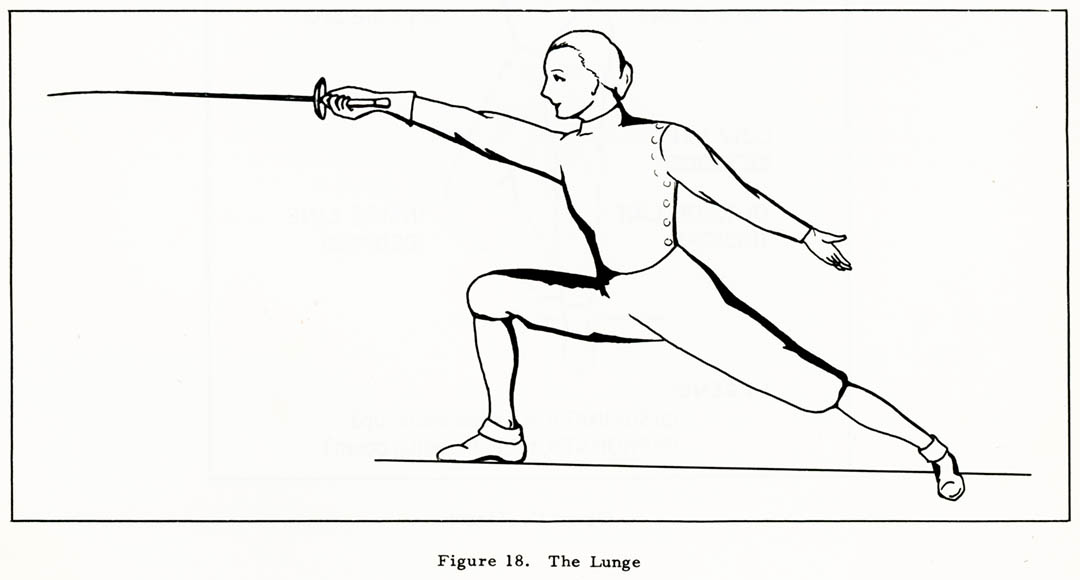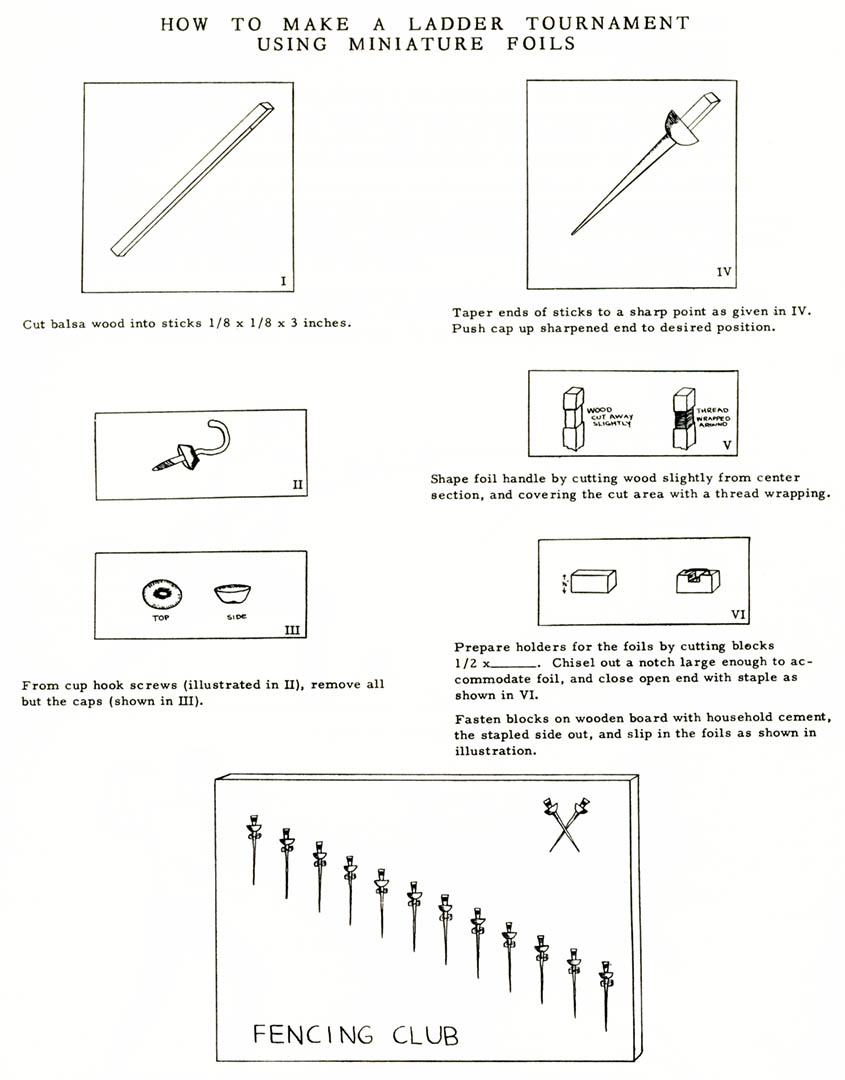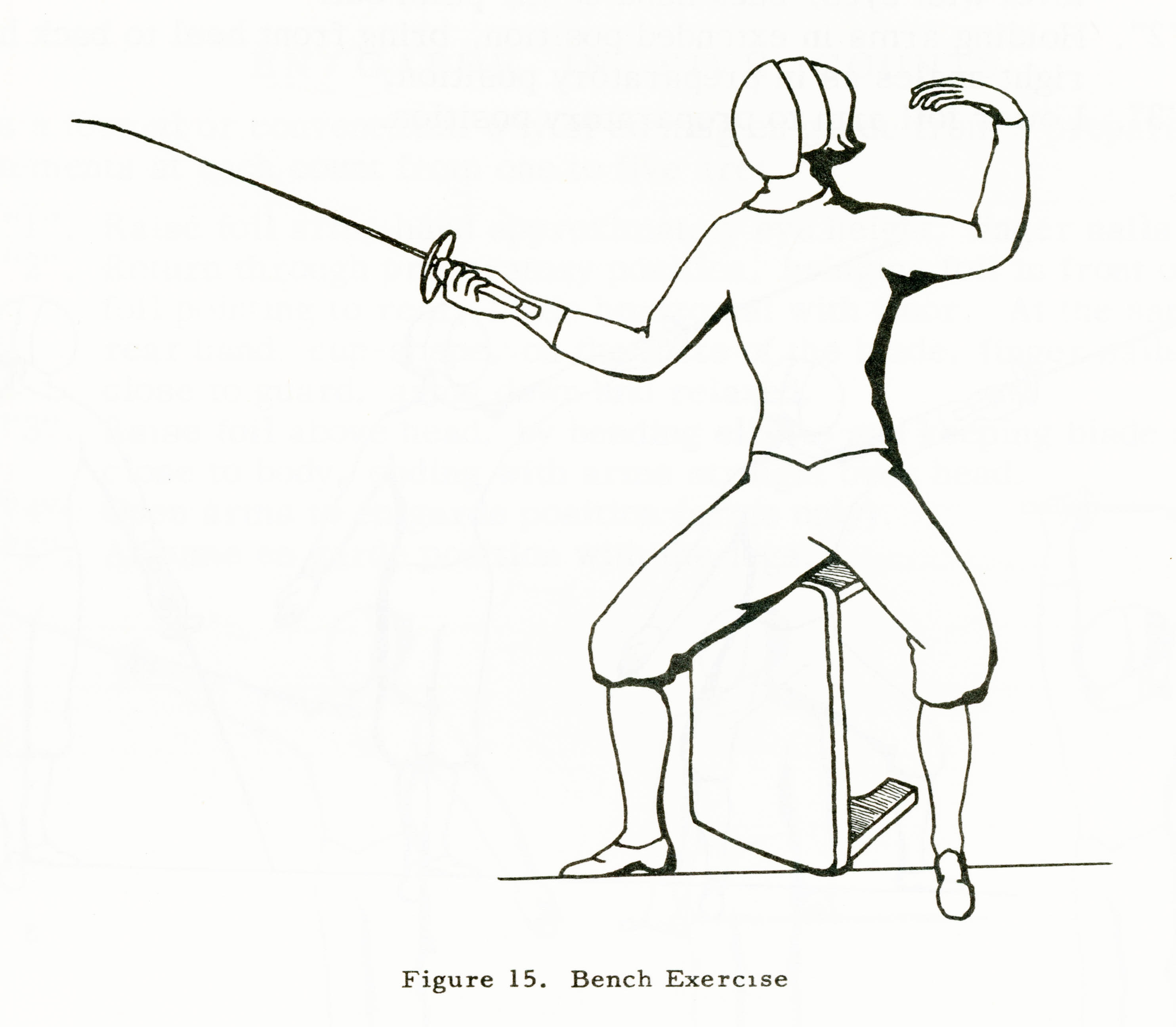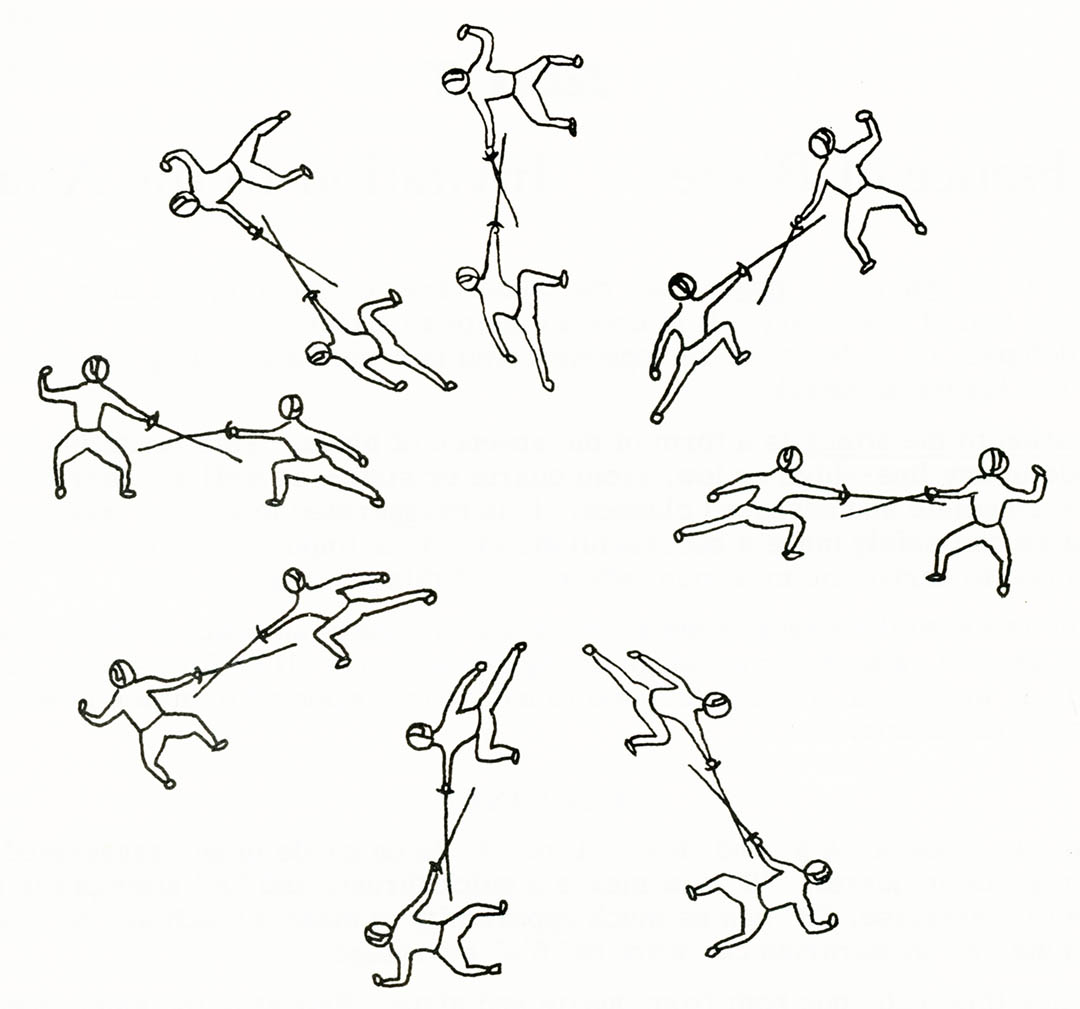It’s a struggle to not take cheap shots at the drawings in old fencing books, at least for me. Sometimes though, the artist’s interpretation of the message the author is trying to convey is just too good to forego a bit of a laugh. Take the above photo, for example. Is Helene Mayer in really in jail? Probably not. And yet.
The book I’m referencing for today’s Fun With Drawings, is “How to Fence: A Handbook for Teachers and Students” by Frederica Bernhard and Vernon Edwards. Miss Bernhard taught at UC Berkeley for decades in multiple disciplines and was possibly better known for her work in diving safety than teaching Berkeley gals to fence.
I’m tempted to take this cover into Photoshop and make a poster of René Pinchart, longtime Maitre d’Armes at the New York Fencers Club.
The book was published in 1956 and in most ways it is a standard tome relating reasonably sound information on how to organize a class, bring along beginning students, and instill in them a love for the sport. That last is a subtly recurring theme throughout the book that the author highlights in various ways and is a sentiment that I’m all in favor of promoting. Where then, do I get off with my making fun of some of the illustrations in the book? What can I say. I’m a bad person. At least, that was the opinion my wife espoused when I showed her some of the pictures and explained my intent.
Let’s continue with the below example:
This is an excellent representation of How To Surrender in three counts. One, without taking a threatening stance, aim your foil well above your opponents’ head. Two, briefly consider the available options for escape if you decide to make a break for it. Three, offer the universally recognized posture of capitulation. White flag tied to the end of the foil is optional.
I’m not certain, as the book does not provide any clarity, as to who was responsible for the drawings versus text, or if both were jointly responsible. Or if both Bernhard and Edwards shared chores on the text and an unnamed artist did the drawings without credit. Another mystery, of sorts, stands in regards to Vernon Edwards. In his preface to the book, Maitre Pinchart references “Miss Bernhard and Mrs. Edwards”, which confuses me as to whether Vernon was her husband’s name or her own, as “Mrs. Vernon Edwards” would have been a common enough way for a woman to write “her” name in the 1950s. Not today, of course; well out of fashion. Whichever, Mrs. Edwards was a member of the New York Fencers Club, so coordinating efforts on the book would have been a back-and-forth progression via the United States Postal Service, no matter who was responsible for what in those long ago pre-fax-machine days of yore.
We’ve all heard it. Some of us (guilty as charged) have said it. Finally, here is the definitive visual example of what exactly is meant when describing the holding of the foil, as compared to holding a bird. You know this old chestnut: tight enough so that it doesn’t get away; loose enough that you don’t murder the sparrow in your hand. Something like that. Of course, it might not be a sparrow. Could be a finch. Or a European swallow. Without a color photograph to get a look at the beautiful plumage of the captive avian, it’s impossible to know.
Because the book was meant for teachers as well as students, it provides some useful examples of things an inexperienced teacher or someone starting a program from scratch might require as an aid to organization. Indeed, there are lots of descriptions on what equipment to provide for a class, how to care for it, workarounds when you don’t have enough jackets or plastrons, etc. One of the more interesting to me is this example of a rolling cart that you can build at home with spare lumber and a few things from the local hardware store. Here’s the whole plan, including measurements:
This thing is awesome! It will hold 30 masks, 39 foils, has interior pegs where you can hang jackets or plastrons to dry and a bookshelf. Actually, several bookshelves on each end of the structure. If anyone needs the plans, let me know. I can email you a higher resolution image of the diagram.
Cleanliness is another theme featured extensively in the book, with recommendations about several ways to avoid the spread of germs. Much advice on the advantages of the removable, washable bib, which is now illegal. Here though, students are advised to purchase their own bib for which they can bear the washing responsibilities. Barring that, wearing a barbershop-style neck tissue is recommended to keep neck germs off the bib. No, seriously, it suggests that. Washing the mask of anyone who has a cold immediately after class is highly recommended. And, ok, that’s not actually a bad idea. Washing masks weekly is also suggested with a warning of ensuring that they dry completely to avoid rust. When gloves are used in multiple classes, it is recommended that students purchase a washable cotton glove that can be worn as an extra layer inside the fencing glove. It goes on to say, “These cotton gloves have unfitted thumbs and can be worn on either hand, so two students can divide a pair as only one glove is needed.” There are also washing instructions and a debate about whether to iron your jacket or not. No definitive answer to that one, but fencing knickers should, indeed, be ironed. There’s a bit of a germaphobe/OCD feel to some of the suggestions. Or maybe I’m just too casual about environmental cleanliness.
This drawing may well have been traced from a photograph of Helene Mayer. Miss Mayer and Miss Bernhard were acquaintances at the very least and partnered on a film about fencing basics that was made at UC Berkeley in 1942. Miss Bernhard’s name isn’t in the credits, but it does reference the UC Berkeley Physical Education Department for Women. That was Miss Bernhard’s bailiwick. You can see the film here. Interestingly, Miss Bernhard partnered on another book, titled “Educational Films in Sports” in 1946, and this 11 minute film of Helene Mayer is the only educative fencing film referenced.
The influence of Helene Mayer on, at least, Miss Bernhard’s ideal perception of fencing form is probably best displayed in this drawing:
That’s essentially the same draw-over as the earlier lunge, but this time with a more Helene-like visage and the hair pulled back in a bun, a frequent feature of Helene’s hairstyle. In her younger days, she actually tended to sport a more Princess Leia-like ‘do’ with buns over each ear. Still. That’s her, even more than the drawing of Helene in jail that I led off with. (It’s not really her in jail. For anyone that was waiting for me to explain that.)
Toward the back of the book, there is a listing of a number of games that can be played in group class settings. There’s “Touchers Keepers” where you attach candy to the jackets of fencers and if one fencer can touch their opponent’s candy, they win the candy. Yum! Also a white-elephant style game titled “Grab Bag” where you fight for first dibs on wrapped gifts that all the fencers have contributed as an entry fee. Interestingly, she also describes a slightly altered version of the “Patri” game I’ve mentioned before (here) called “Captives in the Calaboose”, with a footnote that Giacomo Patri, namesake and originator of the idea, approved the changes to his game.
Here’s another project for you crafty and handy types. It’s for another fencing game, The Ladder Game, and the description says you put a name on each foil and fight for the supremacy of the top position by challenging other fencers and taking their spot. You work your way up by challenging anyone within 3 places of your position, having drawn lots to get the initial placement. Fighting continues until all parties are exhausted. Anyway, you can build it yourself!
This next one bears some explanation, but you can make up your own story first:
Is this not the perfect exercise for the Laziest Fencer in the World? Not that I know who that is, although at this particular moment I think I would, myself, give most people a run for their money. No, this is, in fact, an exercise designed to improve the on guard posture of your students. Got a fencer who’s too scrunched up? Feet in the wrong place? Doesn’t sit low in their guard? Well, provide them with a nearby bench, stool or chair of just the right height and watch those problems melt away! There aren’t any designs in the book for creating an adjustable height devise to aid instructors in providing this level of student assistance. You’ll just have to wing it.
As mentioned above, this book is designed to be used by teachers and fencers, both. The target audience as far as teachers go are those without a great deal of experience in the sport. And really, it’s a handy guide for generalist physical education instructors who work at a place with a pile of fencing gear sitting around gathering dust. Through use of this book, you could, with a minimum of fencing know-how, design a curriculum that would get you through a semester of beginning fencing without much difficulty. There’s just enough information for a teacher to put together a set of lesson plans that would take students on a well-organized walk-through of the basics of the game. The emphasis is on posture, body position, movement and not taking it all too seriously. It’s clearly not trying to create fire-eating competitors right out of the gate, so for what it’s attempting, it’s actually a pretty decent overview that could be followed easily enough.
The most entertaining reading comes in the directions for keeping your gear clean. The best examples are:
Knickers: Trousers should be laundered and ironed frequently.
Gloves: Smooth out wrinkles after the glove has been worn.
Socks: Socks should be washed frequently.
And finally: Underclothing should be worn at all times.
TMI? If that’s all starting to make your head spin, how do you think the below will go over?
I get the idea of this, but I can’t see how it’s better or more efficient that the usual linear line up you’ll see in pretty much all fencing classes everywhere. The description of this layout for class instruction gets a little lost in itself, I think. It can be found in the section on ripostes, but the exercise as described is: fencers salute, go on guard, then the outside circle rotates. Repeat until back with your original partner. I can’t help but think they meant to explain a slightly more complex drill. Still, there’s no reason you couldn’t set up class like this, changing partners by rotating around the fencers on the inside of the circle, assuming you’ve got the room for it. It does seem like it would eat up a fair bit of floorspace.
So that’s How To Fence, circa 1956, with some highly entertaining and educational illustrations. There are certainly fencing books of more modern vintage with a lower quotient of useful information in them. At the very least, that bench exercise is going into my repertoire as soon as I find something the right height upon which to park my tuchus!


